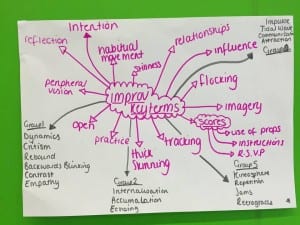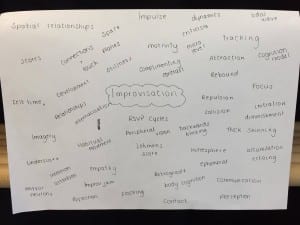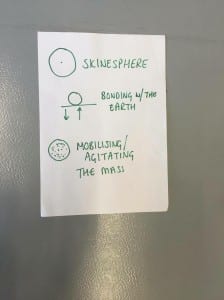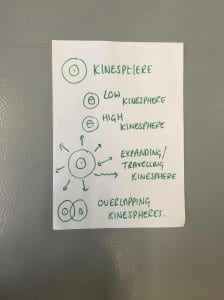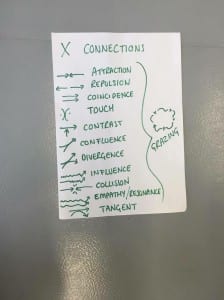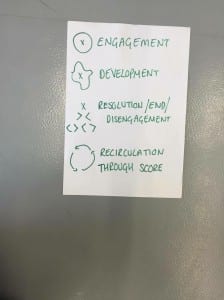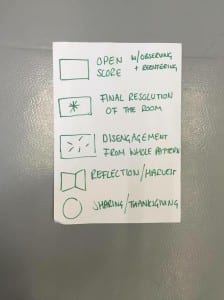The improvisation and reflective practice module has been a real learning curve for me. Initially I was nervous to start the module and often questioned my ability in class, I would get frustrated when I couldn’t think of new movement and often found myself doubting my capability. To tackle this, I began to get myself more involved in improvisation jams, the only way I could improve was to practice and get fully involved in every exercise.
Reflecting back, the module has helped me gain more of an understanding of my own body, I am able to pin point exactly what is habitual and what isn’t and I now have the knowledge to think of ways in combatting this. Learning about different choreographic techniques has really helped me in relation to my practice and developing as a dance artist. For example learning techniques such as retrograde, diminishment, tracking etc has helped me to broaden my knowledge when creating dance and I have learnt how to improvise properly and correctly. These choreographic techniques are ones that I will always refer back to in the future, they are almost like a little choreographic toolbox! Listed in the images below are some other techniques we have learnt throughout the module:
I particularly enjoyed working with imagery and believe that this has helped me a lot with regards to tackling habitual movement. Trying to ‘embody,’ an object and trying to make my body move in a way that it normally wouldn’t was challenging but allowed me to find a new way of moving.
For the first few weeks of the module audience and peer perception worried me. I learnt that improvisation doesn’t have to be about the aesthetic and there is no wrong way of improvising, as long as it is explorative and creative then that’s all that matters, this helped with overcoming my fears of what other people thought; it also helped me explore my movement fully. I would often improvise quite bold and large movements and would find myself stopping for thinking time. Learning about working more internally helped me to tackle these ‘breaks,’ in my movement and develop my improvisation further.
Learning about relationships in improvisation has helped me to become more aware and sensitive to others in the group. I particularly enjoyed learning about ‘thick skinning,’ as I was able to form relationships in the space with people I wouldn’t normally work with. I was able to experiment with complimenting and contrasting people’s movement, intertwining with bodies in the space and pushing my body into unusual positions.
The readings set prior to each class allowed me to understand each process fully. Putting the readings into practice helped me to fully understand them, I enjoyed learning about other people’s scores and using them in the improvisation tasks. Thomas Lehmens score was interesting to work with; being the manipulator I was (in effect) controlling the movement of the creator and it was fascinating watching how their movement changed in relation to your given instructions. I also enjoyed creating our own scores and participating in other peoples.
At the beginning of term I would often try and avoid being in improvisation jams for too long, as these made me anxious but in my last improvisation jam I found myself more or less in the space for the whole time. At the beginning of the module I wouldn’t have envisaged being able to do this whatsoever; the improvisation module has really improved my confidence. My awareness has also improved in relation to entering and exciting the space, I am now able to do this appropriately and confidently.
One of the most important things I have learnt in the module is being able to criticise. Not in the sense of constant negative criticism but in the sense of being able to criticise myself in a way that will help me improve. For me this is extremely important, even if it is just noting things down after class, posing questions to myself to build on, or evaluating my performance each week, I believe this will really help me in my dance training and undergoing development as a dancer.
I am really looking forward to starting contact improvisation next year!
